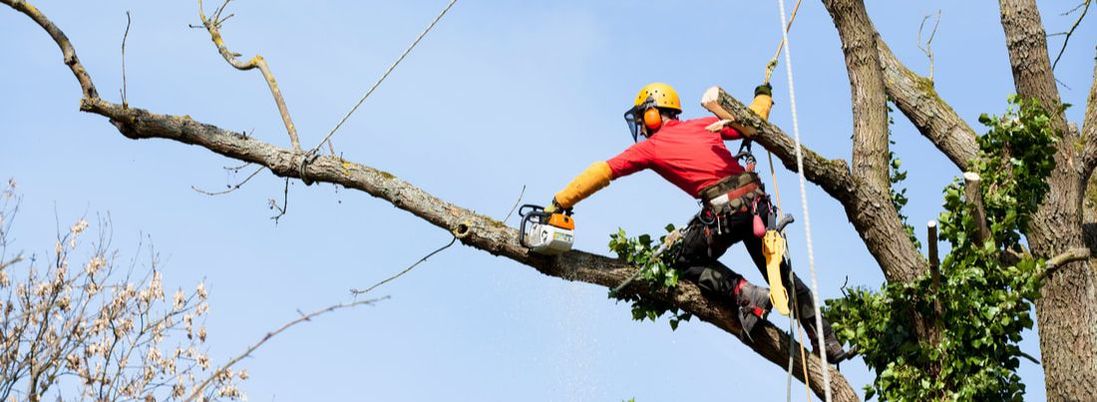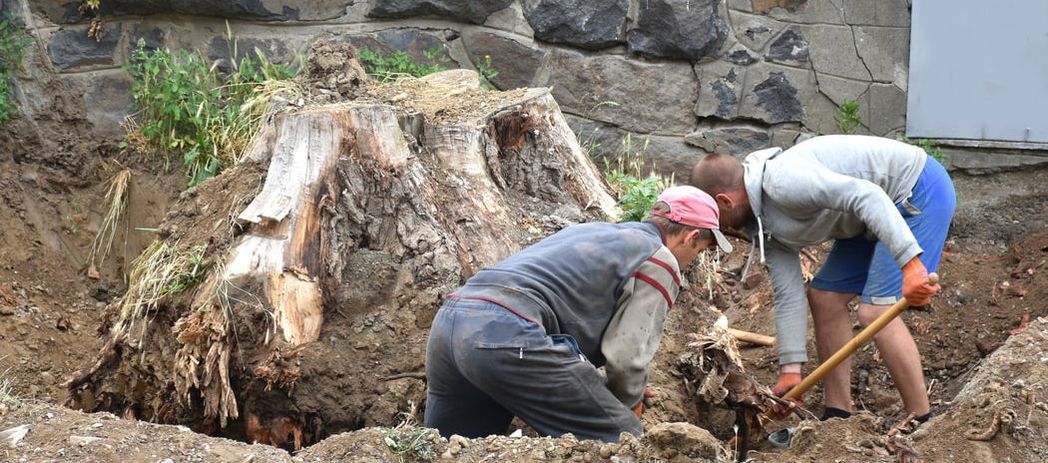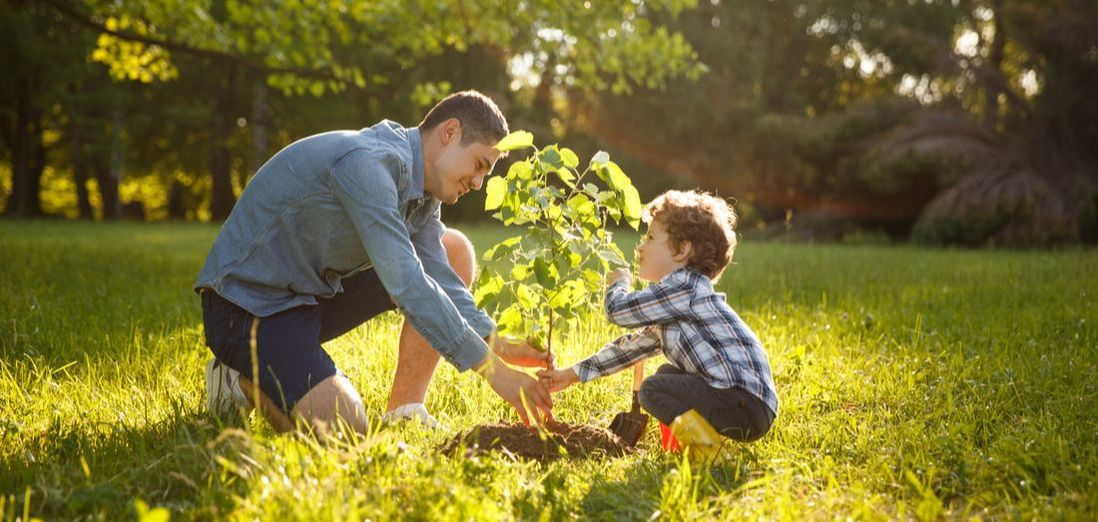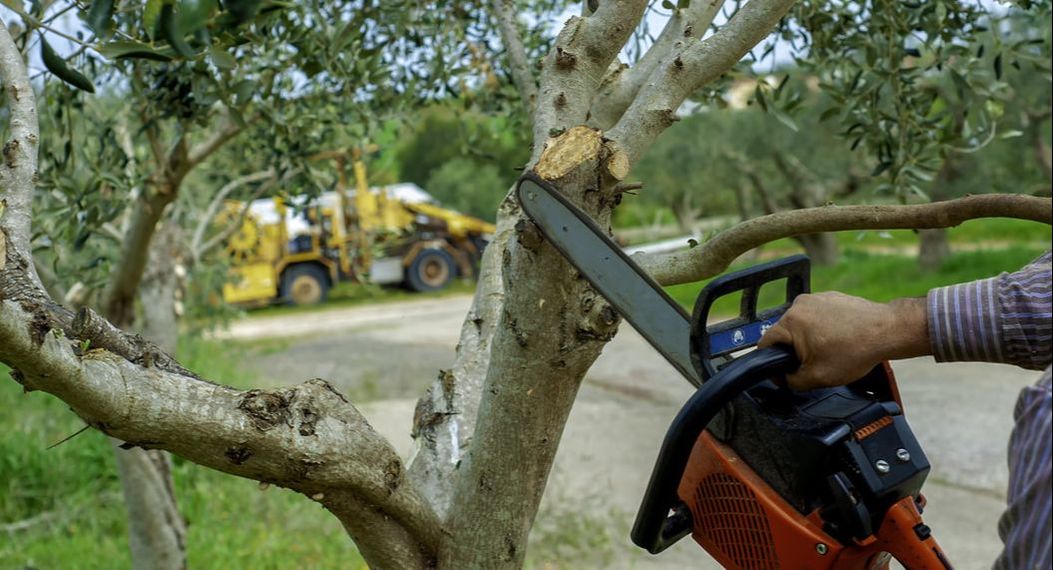|
Taking down a tree is something that should be left to the tree care professionals. If the tree that you want to get rid of is small and short, you might handle it yourself. Although, we recommend calling a business that provides tree service in Syracuse. Whether a small or big tree, safety must come first at all times. There are too many stories of tree cutting gone bad. It's suggested you hire a professional tree removal business to cut down a tree for you. Before doing so, you should school yourself about necessary tree cutting costs. The price to cut down a tree differs on a host of factors. You can spend as little as $100, or you could wind up spending over $2, 000 or more. Tree cutting is best left to an arborist who has more experience. Tree cutting accidents usually occur when people attempt DIY, resulting in tree cutting gone bad. Below are the most common tree cutting accidents.
Tree removal services leave your yard tidy and clear, often resolving a persistent issue and enhancing the area. But removing an old stump also offers a chance to make something new in your outdoor space. What do you do when planting after tree removal? How do you plant a new tree after removing the stump and what sort of conditions should you avoid? Get your landscape looking great with the following tips. Soil Stump grinding produces a good amount of wood chips and sawdust. Even though this natural material breaks down over time and puts vital nutrients in the soil, eliminating some of it and equalizing the mixture with new soil aids in providing right growing conditions for your new tree. You might want to use the ground wood as mulch in other spots in your landscape. Roots Roots stay even after the grinder has turned the stump into sawdust. This can be a real obstruction to the growth of a new tree. Some arborists recommend planting a new tree no sooner than 12 months after removing an established tree. Although, some property owners might want to sift through the surrounding soil to get rid of the majority of the roots. Dig up around the area you want to plant the tree and examine the conditions. If the roots take up more room than the healthy soil, wait 12 months or more for decomposition. Size Shop for trees considerably smaller than the eliminated stump to give lots of room for growth. This provides some beauty with and greenery without giving up the tree’s health and allowing for a lush, green landscape later on. Talk to a tree specialist about tree types that will flourish in your yard and inquire about younger trees. With some shopping and planning, you can enjoy planting after tree removal. To replant another tree in that location, you have to eliminate as much of the sawdust and roots from the original tree as possible to give a rich growing environment for a new tree. This could mean using an ax to chop out all the old roots, so the new tree has plenty of root room to grow. There are times in your life when it occurs to you that breaking a rule or two isn’t bad. One such time is the long-held thought that planting trees in summer is a bad idea. The practice has always been to plant trees in fall and spring when the weather is cooler. While fall and spring are great times of the year to plant trees, we believe that summer is just as good any. We don’t suggest digging and dividing your collection of hosta or transplanting the antique rose bush handed down through generations. But you can plant new trees in the heat of the summer. Any jolt to a plant when planting a tree in a pot is gone since you didn’t dig up the tree or even mess with the roots when cautiously taking it out of the container. Summer heat could bring some stress to new plants. But, with some extra care on your part, it will aid the plant in producing a healthy root system and practically ensure successfully enduring its first winter because of excess root growth. Is Planting Trees in Summer That Bad? The answer is of course not. As long as you take the right care of your treasured foliage, they will do just fine. Don’t forget that since it is summer planting, you have to water them a lot! The trick is water it enough without overwatering it. If you overwater it, you create a whole list of issues, and you don’t want that. If you can, try to pick a week with days that will stay under 90 degrees for top results. When it comes to mulch, use it! Stay away from dyed mulch, but any other mulch will work well. Your goal is to keep the roots as cool as you can. Plus, mulch looks good in any landscape. Call a tree service business for stump grinding and mulch. Mulch aids in holding in moisture and sustaining soil temps, as well as keeping away pesky weeds that rob the nutrients and moisture from your tree. Last but not least, you should keep the mulch a few inches from the trunk of your tree to avoid pest issues and diseases associated with this typical tree planting mistake. As a professional business for tree service in Syracuse, we typically get asked the question, “How often should I trim my trees?” We desire a simple answer, but the response will differ according to certain criteria. So when thinking, “How often should your trees be trimmed?” Your trees hold the answer! Every species of tree thrives at various rates and has multiple implications for how often it will need trimming. With shade trees, some trees can be pruned every other year. There are ones that can go without a trim for seven years or more. Evergreen trees most times will need little or very few trims if planted in the right location. Guidelines For How Often Should Your Trees Be Trimmed A general rule of tree trimming is to try to, when possible, only get rid of 25% of growth from a tree. Trimming more growth will not only severely impact the tree’s health, but it will also create even more growth. When doing proper tree trimming, three primary tree trimming methods will be used to raise the lower limbs, thin out the crown, and eliminate dying/dead branches. The more often these trimming cuts are made, the better chance your tree will have to recoup from the injury of a trimming cut. Also, it allows trees to be schooled for future growth by calculated cuts. One of the things property owners usually overlook is the chance to trim trees while they are young. Doing this will craft better health and form for your tree which will lessen the need for future trimming of mature trees, thus reducing your overall tree trimming costs over time. The best way to tell how frequent to trim your trees is to find a reputable tree care company that has arborists. They can inspect your trees with you and tell you how often you will need to trim various trees throughout your landscape. They may also be able to help you create a schedule for this sort of work so that you can have it planned throughout the year, trimming trees when it is their time. If you want to get your trees cut correctly when they need to be, ask a Syracuse tree contractor. |
AuthorWe at Syracuse Tree Service want to help you with your tree service needs, our blog is where we provide helpful tips and ideas for the health of your trees. Archives
December 2020
Categories
All
|
- Home
- Services
- About
- Contact
-
Service Locations
- Liverpool Tree Service
- North Syracuse Tree Service
- Cicero Tree Service
- Baldwinsville Tree Service
- Manlius Tree Service
- Weedsport Tree Service
- Clay Tree Service
- Bridgeport Tree Service
- Lafayette Tree Service
- Fayetteville Tree Service
- Chittenango Tree Service
- Camillus Tree Service
- Onondaga Tree Service
- East Syracuse Tree Service
- Blog
|
Home | Services | About Us | Contact Us
Liverpool | North Syracuse | Cicero | Baldwinsville | Manilus | Weedsport | Clay | Bridgeport | Lafayette | Fayetteville | Chittenango | Camillus | Onondaga | East Syracuse © Syracuse Tree Care 2017
Syracuse Tree Care 4736 Onondaga Blvd Suite 112 Syracuse, NY 13219 (315) 692-0186 |
|





 RSS Feed
RSS Feed